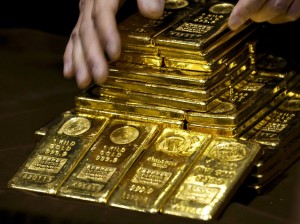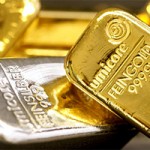 Gold advanced on Wednesday, as downbeat US data cast some doubt that the Federal Reserve will keep scaling back its stimulus at each policy meeting, before exiting the program at the end of the year. The metal drew more support as assets in the SPDR Gold Trust, the biggest bullion-backed ETF, were increased yesterday, after on January 30th they posted the first two-day gain in more than a year.
Gold advanced on Wednesday, as downbeat US data cast some doubt that the Federal Reserve will keep scaling back its stimulus at each policy meeting, before exiting the program at the end of the year. The metal drew more support as assets in the SPDR Gold Trust, the biggest bullion-backed ETF, were increased yesterday, after on January 30th they posted the first two-day gain in more than a year.
On the Comex division of the New York Mercantile Exchange, gold futures for settlement in April traded at $1 256.50 per troy ounce by 08:08 GMT, adding 0.41% for the day. Prices touched a session high at $1 256.70 per troy ounce, while day’s low was touched at $1 252.60 an ounce.
Gold futures settled the 5-day period 2% lower, snapping five consecutive weeks of gains, the longest rally since September 2012. The yellow metal advanced 3.4% in January as MSCI All-Country World Index of equities plunged 4.1% amid concern that a slump in emerging markets may worsen. However, gold settled last year 28% lower, the steepest annual decline since 1981 as investors lost faith in the metal as a store of value and amid speculation Fed will continue scaling back its monetary stimulus throughout 2014.
Fed stimulus outlook
The yellow metal drew support as few downbeat reports cast some doubt that the Federal Reserve will keep scaling back its stimulus at each policy meeting, before exiting the program at the end of the year.
Yesterday, the US Census Bureau reported that factory orders decreased 1.5% in December, less than the median analysts forecast of a 1.8% drop. In November the orders for factory goods rose by 1.8%.
The US Institute for Supply Management (ISM) reported on Monday, that its manufacturing index declined to the lowest level in seven months in January, due to a slump in new orders.
The report revealed that the manufacturing index stood at 51.3 in January, down from December’s reading of 57.0, while analysts had projected that the index will slow down to 56.0 in January. Data also showed that new orders plunged at the fastest pace since December 1980, as the new orders index declined to 51.2 in January from 64.4 in the previous month. Most of the companies cited the bad US weather conditions last month as the main reason for the decreased number of new orders.
Gold prices were pressured last Wednesday, as Fed policy makers reached an unanimous decision to cut Fed’s monthly bond purchases for a second straight meeting by another $10 billion. This was the first meeting without dissent since June 2011 as policy makers were brought together by concern over Fed’s swelled balanced sheet which raised risks of asset bubbles.
The Federal Open Market Committee said it will further trim the central bank’s Quantitative Easing program based on improving labor market conditions and as economic growth accelerated in the recent quarters.
The Federal Reserve kept its tone that it will most likely hold its target interest rate near zero even after unemployment drops below 6.5%, especially if inflation remains well beneath policy makers’ long-term goal of 2%.
The central bank will probably continue to pare stimulus by $10 billion at each policy meeting before exiting the program in December, according to a Bloomberg News survey of 41 economists, conducted on January 10th.
Assets in the SPDR Gold Trust, the biggest bullion-backed ETP, were increased to 797.05 yesterday, after on January 30th they posted the first two-day gain since December 2012. However, the fund has lost 41% of its holdings in 2013. A total of 553 tons has been withdrawn in 2013. Billionaire hedge-fund manager John Paulson who holds the biggest stake in the SPDR Gold Trust told clients on November 20 that he wouldn’t invest more money in his gold fund because it isn’t clear when inflation will accelerate.





